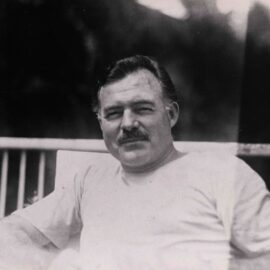

This article gives you a glimpse of what you can learn with Shortform. Shortform has the world’s best guides to 1000+ nonfiction books, plus other resources to help you accelerate your learning.
Want to learn faster and get smarter? Sign up for a free trial here .
What are essential soft skills you need in your professional and personal life? What are the best soft skills books to read?
Soft skills are interpersonal skills that help you work and interact with other people. The most important of these skills that you use in everyday life are communication, teamwork, critical thinking and problem-solving, and time management.
Below we’ve compiled a list of the best soft skills books, categorized by each skill.
Communication
Without communication, people wouldn’t get very far. It’s the foundation of society and every relationship. With these soft skills books based on communication, you’ll learn how to speak better, resolve conflict, and effectively use persuasive techniques.
Nonviolent Communication (NVC) is a way of interacting with ourselves and others that’s rooted in empathy and compassion. The ultimate goal of NVC is to foster authentic connections between people regardless of their differences. That focus on human connections makes NVC a powerful conflict resolution tool—once there is a genuine human connection, the original problem tends to solve itself.
4 Essential Keys to Effective Communication
Two of the most common communication faux pas are the failure to effectively listen and the failure to adequately express yourself to others. These issues result in misunderstandings, hurt feelings, and the inability to resolve problems. In 4 Essential Keys to Effective Communication, Bento C. Leal argues that these communication errors are the most damaging to relationships. However, he claims you can avoid these mistakes and their negative outcomes by learning how to integrate empathy into every step of the communication process.
People who are comfortable in social situations have the best chance of establishing beneficial relationships and creating opportunities for personal and professional success. Unfortunately, many people struggle with social situations and don’t know how to confidently approach and talk to others. Their discomfort prevents them from creating new connections and they miss out on enjoying opportunities that spring from social and professional relationships. In How to Talk to Anyone, Leil Lowndes presents practical techniques to help you overcome social discomfort and confidently develop new connections.
How Highly Effective People Speak
Effective communication, according to Peter D. Andrei, is more of a science than most people think. Persuasive speech is a complex craft that can be studied and learned, and its strategies can be broken down and used by anyone. In How Highly Effective People Speak, he shares the basic strategies of powerful communication, teaching you how to speak with eloquence and persuasion by tapping into patterns of thinking that affect human behavior and perception.
Most people communicate from their own perspective, but great communication comes from understanding and connecting with other people. Written by communication expert Jay Sullivan, Simply Said is a blueprint for effective business communication. Top-notch communication skills are essential to success in any professional field—after all, you can only get clients, colleagues, and audiences to buy into your ideas if you’re able to communicate them clearly.
Teamwork
As John C. Maxwell said, “teamwork makes the dream work.” Even if you don’t work in an office with other people, teamwork is an essential skill that strengthens relationships. Take a look at these teamwork-based soft skills books to collaborate and connect with others.
The Five Dysfunctions of a Team
What prevents a team from succeeding in its mission? This is the central question of The Five Dysfunctions of a Team. The book presents the five dysfunctions like a pyramid—each one builds on the next. And to solve all the dysfunctions, you need to start at the bottom and most fundamental dysfunction. Each one discusses what a healthy environment looks like, what the dysfunction looks like, and how to overcome the dysfunction.
In 2004, General Stanley McChrystal took over as commander of the U.S. Joint Special Operations Task Force fighting Al Qaeda in Iraq. The sprawling organization—encompassing strategists, analysts, and elite special forces from every branch of the U.S. military—was struggling to make headway against an unconventional enemy and environment. In Team of Teams, McChrystal describes how he transformed the slow-moving bureaucratic task force into an agile, adaptable network of teams united by a “shared consciousness”, trust, and decentralized decision-making.
Being a team player who can work effectively with others to achieve a group goal is more important than ever in our interdependent and changing world. However, true team players are surprisingly uncommon. In The Ideal Team Player, Patrick Lencioni defines the model team player as a person who embodies the virtues of humility, hunger or drive, and people skills. He explains how to transform your organization by developing your current employees into team players and making sure you hire team players in the future.
What makes some organizations more effective than others? In Tribal Leadership, authors Dave Logan, Halee Fischer-Wright, and John King contend that culture makes all the difference. Any organization succeeds or fails in the culture of its tribes—groups of individuals that share ways of thinking, interacting, and working—and we can improve our organizations by upgrading the cultures of those tribes.
In a competitive and rapidly changing marketplace, it’s a challenge for any company to efficiently produce software that meets customer needs, let alone create usable software for internal purposes. In Team Topologies, software engineers Matthew Skelton and Manuel Pais show you how to set up your development teams to work as efficiently as possible. By using their approach, you can ensure that your organization’s teams can work together to create software that exceeds expectations both internally and in the marketplace.
Critical Thinking and Problem-Solving
Critical thinking and problem-solving go hand-in-hand. If you have an issue, you can’t resolve it without careful analysis and evaluation of the situation. Whether you’re dealing with a broken appliance at home or helping a dissatisfied customer, critical thinking and problem-solving create solutions. Here are five soft skills books to help you get started in this area.
In a competitive and rapidly changing marketplace, it’s a challenge for any company to efficiently produce software that meets customer needs, let alone create usable software for internal purposes. In Team Topologies, software engineers Matthew Skelton and Manuel Pais show you how to set up your development teams to work as efficiently as possible. By using their approach, you can ensure that your organization’s teams can work together to create software that exceeds expectations both internally and in the marketplace.
Critical Thinking, Logic & Problem Solving
Have you ever wished you were a more effective thinker? Do you feel overwhelmed when presented with a problem? In Critical Thinking, Logic & Problem Solving, Bigrocks Thinking explains how you can enhance your critical thinking and problem-solving abilities to improve your learning, your work, and your personal life. They also explain how to develop and implement solutions to problems, and they provide guidance on how to structure your thinking for effective communication and powerful storytelling.
In Six Thinking Hats, doctor and psychologist Edward de Bono takes the phrase “put your thinking cap on” to a new level. As De Bono explains, our normal thinking process is a hopeless tangle of six different types of thinking. We can improve the quality and efficiency of our decisions by untangling these six thinking types (symbolized by six hats of different colors) and deploying them more consciously.
What do master chess players and master businesspeople have in common? Both always plan five steps ahead. In Your Next Five Moves, entrepreneur Patrick Bet-David argues that what distinguishes exceptional business leaders from average ones is their ability to anticipate future events and plan effectively for them—ideally by thinking five steps ahead. To turn you into a master business planner, Bet-David presents five strategic steps you must start taking now: learn about yourself, improve your problem-solving skills, create a winning team, expand your business, and position yourself as an industry leader.
A cult classic among professional athletes, The Obstacle Is the Way is a guidebook to solving any problem preventing you from achieving ambitious goals. It’s based on the tenets of Stoicism—an ancient Greek philosophy promoting calm rationality in any situation. Ryan Holiday argues that by choosing to view your obstacles in an empowering way, you can turn them into your greatest assets.
Time Management
If you often find yourself overwhelmed by your task list and obligations, these soft skills books can help. You’ll learn how to overcome procrastination, get organized, and pull your focus back to what’s important. Check out the five essential books on time management below.
Do you feel overwhelmed by assignments, meetings, and obligations? Does it feel like there’s never enough time in the day and none for what you really want to do? In Make Time, Jake Knapp and John Zeratsky argue that we live in an information landscape designed to steal our time and attention. To escape from all of our modern distractions, you must be proactive to take back your time. The authors offer tips, tricks, and hacks to reclaim control of your day-to-day life and make time for the things that matter most.
How can you fit a meaningful job, time with your loved ones, and leisure time into your schedule? Many of us would say that it’s impossible. But in 168 Hours, productivity expert Laura Vanderkam argues that you can have a full, satisfying life as long as you manage your time intentionally. 168 Hours explore what it means to manage your time intentionally, and how to discover where all your time is going.
In First Things First, Stephen R. Covey, author of The 7 Habits of Highly Effective People, presents a time management approach that focuses on priorities, or “first things.” This approach teaches you to use your time effectively instead of just efficiently—in other words, focusing on what you spend your time on, rather than just how much time you spend per task. In this soft skill book, you’ll learn how to identify your priorities, schedule your time at the daily and weekly levels, and collaborate with others to ensure the best possible results for everyone.
Why do we put off the things that matter most to us, even when we know that doing so makes us unhappy in the long run? According to psychologist and productivity coach Neil Fiore, the problem isn’t that we’re lazy—it’s that procrastination is a symptom of the fear and anxiety we sometimes feel about our work. In his 1988 book The Now Habit, Fiore explains what procrastination is, why we do it, and most importantly, how to avoid it.
With sports and travel writer Matthew Rudy, authors Jason Selk and Tom Bartow teach you how to increase your productivity, maximize your time, and set yourself on the path to success in their book Organize Tomorrow Today. Combining backgrounds in athletics, psychology, and finance, Selk and Bartow have worked for decades as advisors and coaches in both the sports and business worlds. Their programs have helped countless athletes and business professionals improve their job performance and become some of the most successful members of their fields.
Final Words
People with a diverse range of soft skills are highly in demand in the work world right now. Even if you’re not looking for a new job, these skills will still come in handy in every aspect of your life. Read at least one soft skill book from every section above, and you’ll be amazed by your growth.
What is your favorite soft skills book? Let us know in the comments below!

Want to fast-track your learning? With Shortform, you’ll gain insights you won't find anywhere else .
Here's what you’ll get when you sign up for Shortform :
- Complicated ideas explained in simple and concise ways
- Smart analysis that connects what you’re reading to other key concepts
- Writing with zero fluff because we know how important your time is






